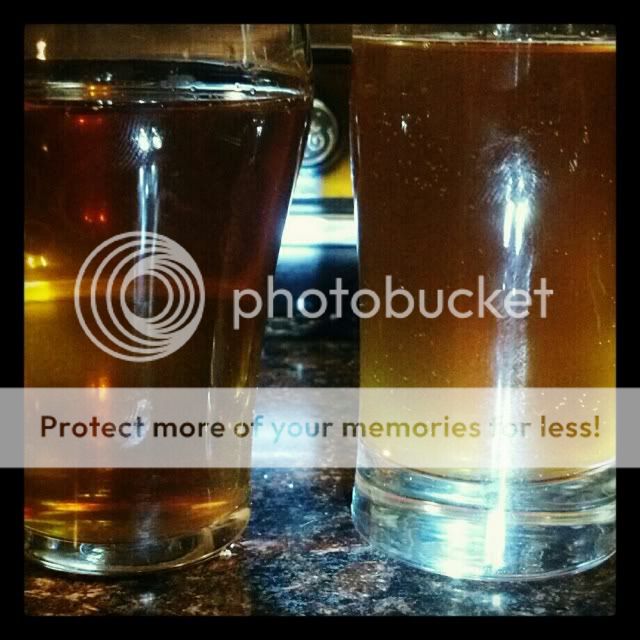I'm sitting here drinking a sparklingly clear home brewed IPA. So what's wrong? It's taken 4 weeks at fridge temp to get there and I drank most of the keg before it got to this point! It was respectably after a cold crash, but its just taking too long to get to commercial level clarity.
I know.... patience, blah, blah blah.... but I only have room for 2 kegs. I'd love to expand my cold storage capabilities, but it isn't in the cards right now. Any great tips for speeding clarification along?
Current methods
Whirfloc
Immersion chiller
3 weeks primary with dry hop for the last week
Cold crash to drop the yeast before packaging
The cold crash and fridge temps seem to be dropping the yeast pretty effectively, but I'm left with some mild protein or hop haze (using 10oz of hops here in a 5 gallon batch, yum...)
I've tried filters. That seemed to get to "good" immediately, but didn't speed the time to "sparkling" at all.
Considering a protein rest in the high range to see if that does anything.
Haven't really messed with water chemistry since I haven't had conversion issues, but I'm game if anyone has great insight there.
I know.... patience, blah, blah blah.... but I only have room for 2 kegs. I'd love to expand my cold storage capabilities, but it isn't in the cards right now. Any great tips for speeding clarification along?
Current methods
Whirfloc
Immersion chiller
3 weeks primary with dry hop for the last week
Cold crash to drop the yeast before packaging
The cold crash and fridge temps seem to be dropping the yeast pretty effectively, but I'm left with some mild protein or hop haze (using 10oz of hops here in a 5 gallon batch, yum...)
I've tried filters. That seemed to get to "good" immediately, but didn't speed the time to "sparkling" at all.
Considering a protein rest in the high range to see if that does anything.
Haven't really messed with water chemistry since I haven't had conversion issues, but I'm game if anyone has great insight there.



